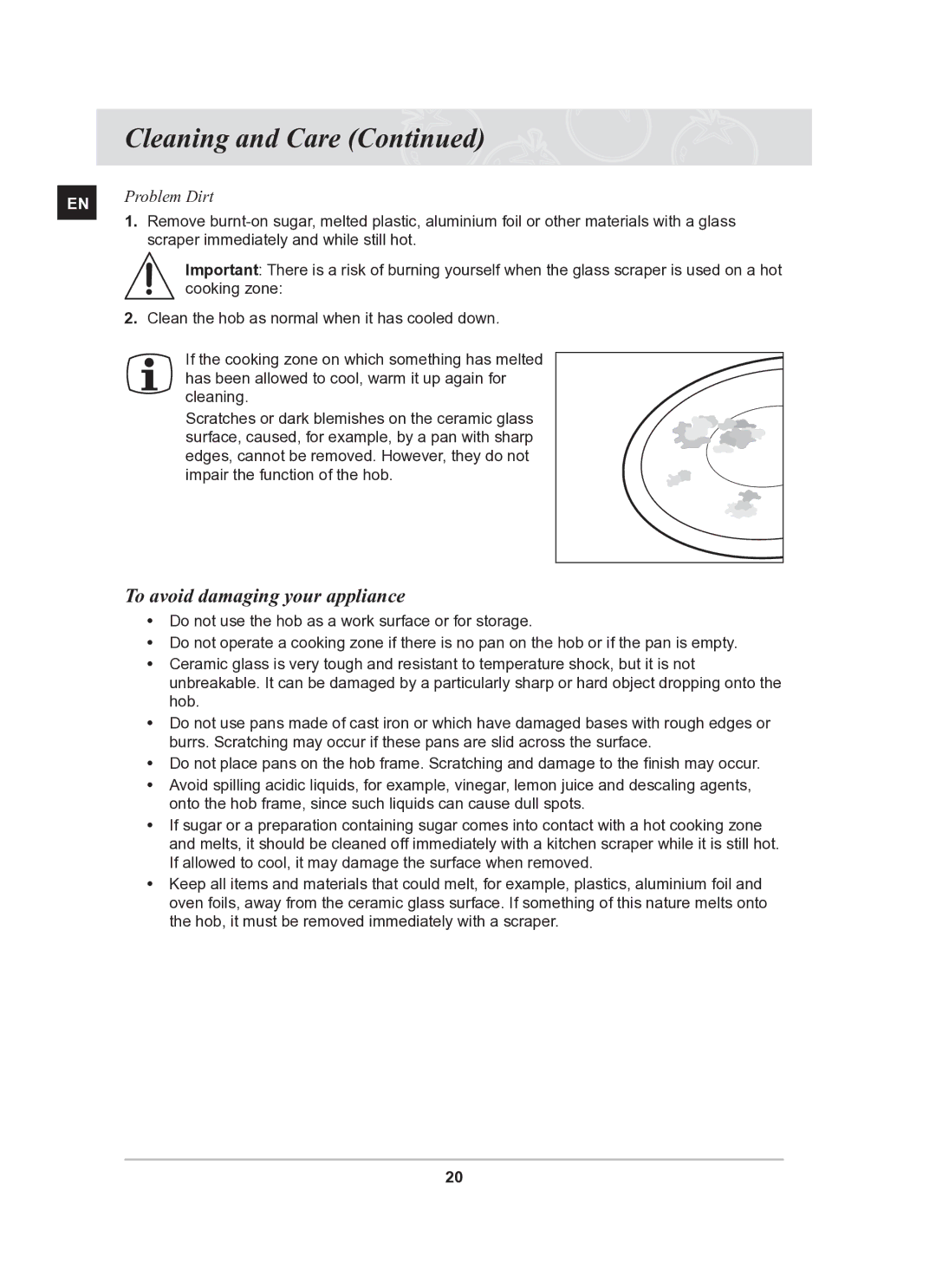
| Cleaning and Care (Continued) | |
EN | Problem Dirt | |
1. Remove | ||
| ||
| scraper immediately and while still hot. | |
| Important: There is a risk of burning yourself when the glass scraper is used on a hot | |
| cooking zone: | |
| 2. Clean the hob as normal when it has cooled down. | |
| If the cooking zone on which something has melted | |
| has been allowed to cool, warm it up again for | |
| cleaning. | |
| Scratches or dark blemishes on the ceramic glass | |
| surface, caused, for example, by a pan with sharp | |
| edges, cannot be removed. However, they do not | |
| impair the function of the hob. |
To avoid damaging your appliance
•Do not use the hob as a work surface or for storage.
•Do not operate a cooking zone if there is no pan on the hob or if the pan is empty.
•Ceramic glass is very tough and resistant to temperature shock, but it is not unbreakable. It can be damaged by a particularly sharp or hard object dropping onto the hob.
•Do not use pans made of cast iron or which have damaged bases with rough edges or burrs. Scratching may occur if these pans are slid across the surface.
•Do not place pans on the hob frame. Scratching and damage to the finish may occur.
•Avoid spilling acidic liquids, for example, vinegar, lemon juice and descaling agents, onto the hob frame, since such liquids can cause dull spots.
•If sugar or a preparation containing sugar comes into contact with a hot cooking zone and melts, it should be cleaned off immediately with a kitchen scraper while it is still hot. If allowed to cool, it may damage the surface when removed.
•Keep all items and materials that could melt, for example, plastics, aluminium foil and oven foils, away from the ceramic glass surface. If something of this nature melts onto the hob, it must be removed immediately with a scraper.
20
